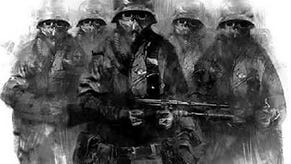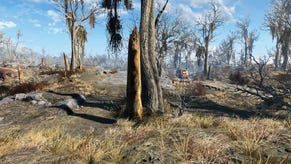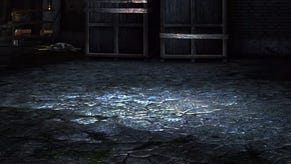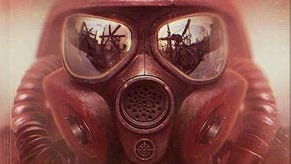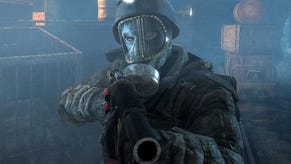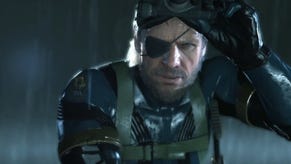Metro 2033
No picnic.
Ah, time to roll out one of my "meanwhile in capitalist Russia" anecdotes... A couple of years ago I was lucky enough to be out in Moscow visiting a developers' fair. While I was there I met up with one of the 1C Company bosses, and we had a chat about the apocalyptic theme that runs through Russian and Ukrainian gaming.
It was, he said, partly something to do with the psyche of the people of the region, but also, perhaps, because Fallout had been so popular. "All our developers just want to make another Fallout," he said, laughing.
It was only later that I realised quite what he meant. It wasn't that they all wanted to make intricate role-playing games, but that the classic apocalyptic scenario had become one with the region's own dystopian fictions. Some of the games we're now seeing come out of the region - S.T.A.L.K.E.R., Cryostasis, Metro 2033 - are an expression of that collision of ideas.
The quality of the fiction is clearly a big deal to Ukrainian developers. S.T.A.L.K.E.R. developer GSC based its game partly on the real Chernobyl zone and partly on the incredible novel "Roadside Picnic", and now Metro 2033 leans on the apocalyptic scribblings of handsome young Russian author, Dmitry Glukhovski.
Metro 2033, which first appeared as a series of online works and then later as a novel, describes Moscow after a nuclear war, with the human survivors living in the impressive underground rail system beneath the city. This provides the backdrop for the game, which sees you take on the role of the protagonist, Artyom, as he makes a journey through the underground to try and save his station (which equal settlements in his underground world) from ultimate destruction.
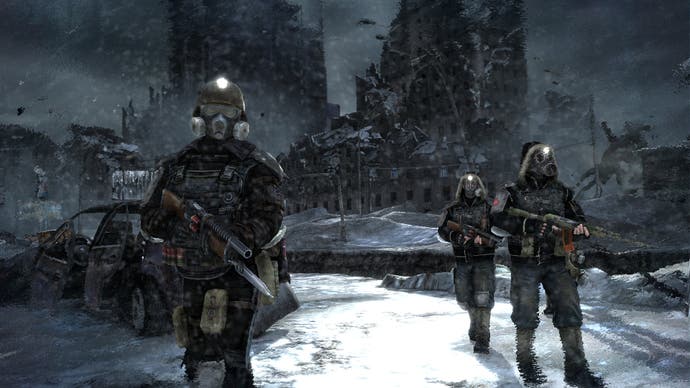
Needless to say, this involves lots and lots of violence, because Metro 2033 is set in a network of tunnels, and this is a tunnel shooter of the kind we are all familiar with. As ever in these games, a series of linear events propels you forward, and while there are places in which you wander around in and explore, this is definitely not S.T.A.L.K.E.R., and has none of the same sandbox ambitions.
Metro 2033 is filled with cinematic sequences, and even moments when control is pulled from your hands and the game takes over Artyom's viewpoint. More intriguingly still, there are quasi-cut-scene hallucinations, which are partly FMV and partly interactive - something like certain scenes from the FEAR games.
Metro 2033 is a traditional shooter in many ways, and a game that looks to Half-Life 2 or the Call of Duty games for its inspiration, but it's in the details that these games live or die. Fortunately for us the development team, 4A Games, is pretty competent in this regard, and has thrown down plenty of variety along the way.
Combat takes place in all kinds of situations, sometimes with allies and companions at your side, and sometimes solo, in the murky depths of the Metro. There are extensive non-combat sequences too, such as when you visit various stations and other underground bases.
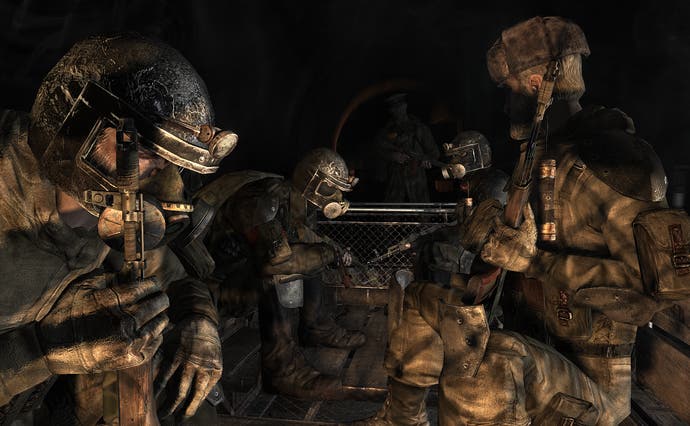
Many of these can be wandered around, and are filled with ambient goings-on: people are chatting, trading, keeping pigs, drinking booze. It adds a swathe of life and character to the game world that most other games lack. You begin to see a little of how this endangered human community might survive.
Your visits to these places are only temporary respite, however, because most of the game is in the journey, and Moscow is a brutal and nightmarish place. Not only because the people are hard and spiteful, but because the world is now the home of various hideous mutants.
And did I mention it's murky? Curling smoke and dust, down to strata of poisonous gas. While there are occasional visits to the brightly-lit and blasted landscape of the surface, most of the action takes place in the tunnels.
Wherever you are it's atmospheric. This is a world that is heaving with apocalyptic detail, but also submerged in its own gaseous horrors. Both on the surface, and in certain areas of the Metro, you'll require a gas mask, which uses filters like a gun uses ammunition. The first time you die because of exposure to gases, you begin to realise that this is a shooter that is as much about survival as about the story, or the combat.


